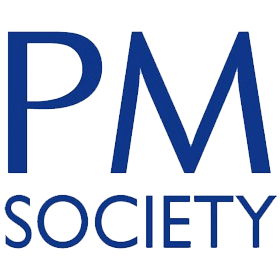
Our interview series on what has changed in the world of patient engagement over the last decade, and what changes the next ten years may bring continues with Amanda Simonds, Patient Engagement Lead in Immunology & Bone Health at UCB Pharma Ltd, who shares her views as a long-serving pharmaceutical industry expert in patient engagement.
Amanda Simonds is Patient Engagement Lead in Immunology & Bone Health at UCB Pharma Ltd. Amanda leads on patient engagement across a range of conditions including psoriasis, osteoporosis, rheumatoid arthritis, psoriatic arthritis and ankylosing spondyloarthritis. Amanda’s role at UCB has two principal dimensions – continuously exploring how to involve patients at all stages of the drug discovery lifecycle, and building long-term collaborations with patient organisations to support people living with chronic and life-limiting conditions.
SUMMARY:
Key takeaways:
- It is crucial that we do more to understand the experiences of those that aren’t engaged with their health, or active on social media, and develop programmes to support their needs.
- The way we work with patients and patient organisations has transformed from a historically transactional model to a collaboration model – based on co-creating mutually valuable initiatives.
- We can learn so much from other industries – we need to solicit feedback more often and not assume what patients and carers want and need
Q&A:
Question 1. What are the 3 biggest changes you’ve seen working in patient engagement over the last 10 years?
- 10 years ago, there was no such role as a Patient Engagement (PE) Lead! Patient Engagement did not exist as a discipline per se and very few companies saw the need for a dedicated PE role.
- The way we work with patients and patient organisations has transformed from a historically transactional model to a collaboration model – based on trust, sustainability and co-creation.
- Patient Engagement is now a fully integrated part of how we as a company work. Patient involvement and validation is now built into the whole drug development lifecycle.
Question 2. In the last decade, what do you think has been the biggest win in the field of patient engagement?
We now proactively seek patient insights at multiple points in the drug development lifecycle so we can better understand the true impact of health conditions on lives of those living with them, and therefore better understand the difference we can potentially make.
Patient involvement in clinical trial design is now common practice, and widely understood as critical to success in terms of recruiting the right patients and measuring relevant outcomes.
Question 3. What is the biggest challenge(s) the healthcare sector still faces when it comes to patient engagement?
Reaching the “unreachable”. The people who are active on social media, involved in patient organisations and interested in participating in patient insight activities are, on the whole, the proactive, empowered and well-informed patients. However, the majority of patients, particularly those living with chronic conditions, are by and large disengaged and often passive recipients of care. It is crucial that we do more to understand their experiences and find ways to support them to live fulfilled and “normal” lives.
Question 4. What are you hoping will change in the next 5 years when it comes to patient engagement?
The way we work with patients and patient organisations is evolving all the time, and we are continually finding new ways of collaborating. Our regulatory framework is forever playing catch-up which leads to a variable interpretation of the guidance that exists. This has improved significantly in the last iteration of the Code of Practice with the inclusion of Collaborative Working provision for patient organisations, but there can still be a nervousness and ambiguity about how we work with patient organisations. I would like this to change.
Whilst the way we work with patients and patient organisations has metamorphosed considerably from the transactional to the collaborative, this is not across the board. I would like to see more long-term strategic relationships developed with patient groups – setting a 4/5 year vision that, together, we can plot a course towards achieving. This will of course mean securing multi-year commitment internally as well.
Question 5. What can different sectors within patient engagement (industry, research/academia/ regulatory) learn from each other and how can they best collaborate?
A good example of how these sectors collaborate is the James Lind Priority Setting Partnership model – with clinicians, academics, patient organisations and patients identifying top 10 areas for research – recently applied to psoriasis and psoriatic arthritis, which you can read more about here.
Bonus Question. Where do you go for inspiration and novel approaches in patient engagement?
Within the pharmaceutical industry I always love looking at the Communiqué awards shortlist for inspiration.
We can also learn so much from other industries – we need to solicit feedback more often and not assume what patients and carers want and need. At UCB, we conduct an annual survey of our patient organisation partners to understand their experience of working with us, and where we can improve how we work with them.
